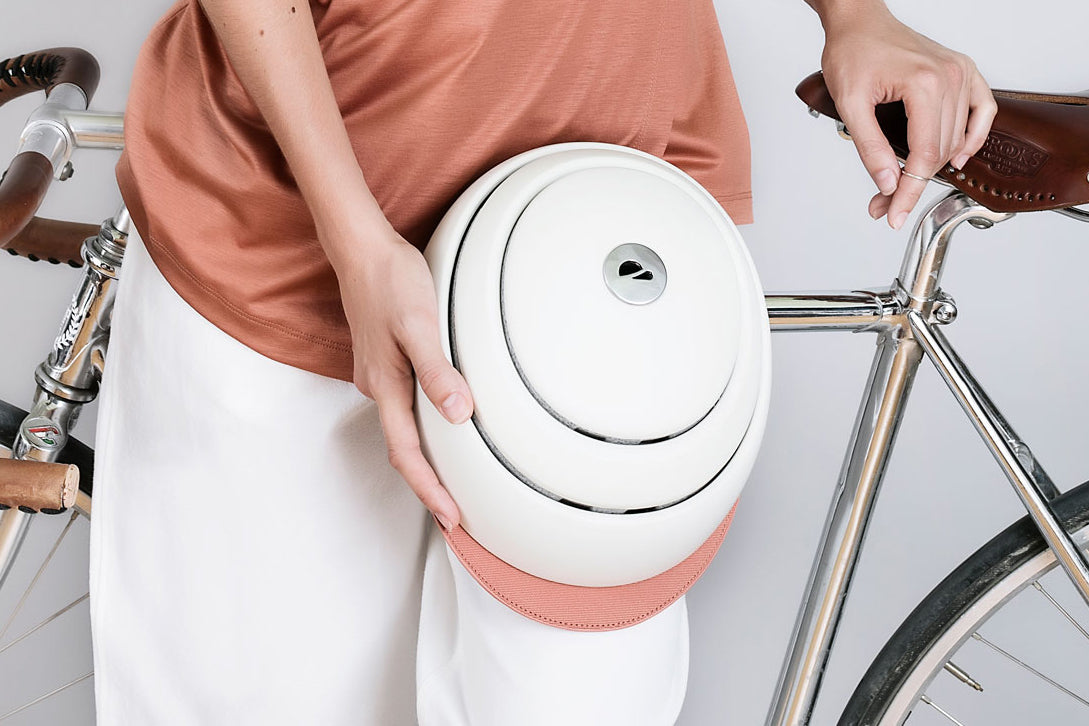Ever wonder how you can make purchases with your smartphone? Or how you’re able to swipe your phone at the airport and use a “mobile” ticket? The answer is Near Field Communication, or “NFC” for short, and it’s a type of wireless data transfer that allows devices within close proximity to each other to communicate without an internet connection. It’s simple, the data transfers are quick, and thanks to the geniuses behind the Closca name, it’s even in your Closca Helmet. Read below to find out how it works.
What is NFC technology?
To put it simply: Near field communication is a contactless data transfer technology. It was first invented by a man named Charles Walton in 1983, who used radio frequency identification (RFID)—a technology typically used for tracking retail operations—to send radio frequencies to specific, RFID-enabled receivers. Fast-forward to 2004, and cellphone companies, which have been instrumental in furthering the technology, started adopting it, too. That said, it wasn’t until 2010 when consumers finally saw the first introduction of NFC on the smartphone market, as Samsung announced the invention of the Nexus S. Today, NFC is a household name for device users. You can’t find a smartphone without it!

How does it work?
For near field communication to function, all involved devices need to have an NFC tag or chip. This chip recognizes a chip in another device, and by doing so, both devices are able to start sharing data. For it to work, both devices need to be directly next to each other, or one device can tap, wave over, or swipe the other. The process is simple and efficient; the devices don’t need to go through multiple steps to connect to one another.
There are three types of NFC technology—Type A, Type B and FeliCa—and participating devices can either be “passive” or “active.” Passive devices, like an NFC tag, has information that other devices can read, but it won’t read information from another device itself. Active devices, on the other hand (like a smartphone!), can both read and send information. No matter which device sends or receives the information, users can rest assured that all information shared is secured. NFC devices often send highly-personal information, like a credit card number, and uses encrypted pathways to do so.

What are its benefits?
The invention of NFC technology has drastically changed the way we perform daily transactions. While NFC chips have always been inside our credit cards, NFC technology has enabled the creation of Samsung Pay, Apple Pay and Microsoft Wallet, thus letting us use our smartphones like a credit card, too.
And while payments are the most common use of this technology, NFC doesn’t stop there. Programs like Android Beam and Ice Cream Sandwich 4.0 let users transfer photos, contacts and directions quickly and easily, and Bluetooth speakers and headphones (one of the most practical uses of NFC tags) use NFC chips to connect to our smartphones.

Closca + NFC
Staying true to its commitment to seamless design and innovation, Closca has implemented this revolutionary technology into the Closca Helmet. By doing so, those who own a Closca Helmet can use NFC to connect the bike helmet to their smartphone, and with it, register important information, from personal user data to an emergency contact. By just tapping your smartphone, you can immediately call your registered emergency contact, and send them location data in the case of an accident. On a more fun note, you can even embed your Citibike information in your smartphone and, instead of carrying your Citibike card, use your Closca Helmet to pick up a public Citibike.




Laisser un commentaire
Ce site est protégé par hCaptcha, et la Politique de confidentialité et les Conditions de service de hCaptcha s’appliquent.